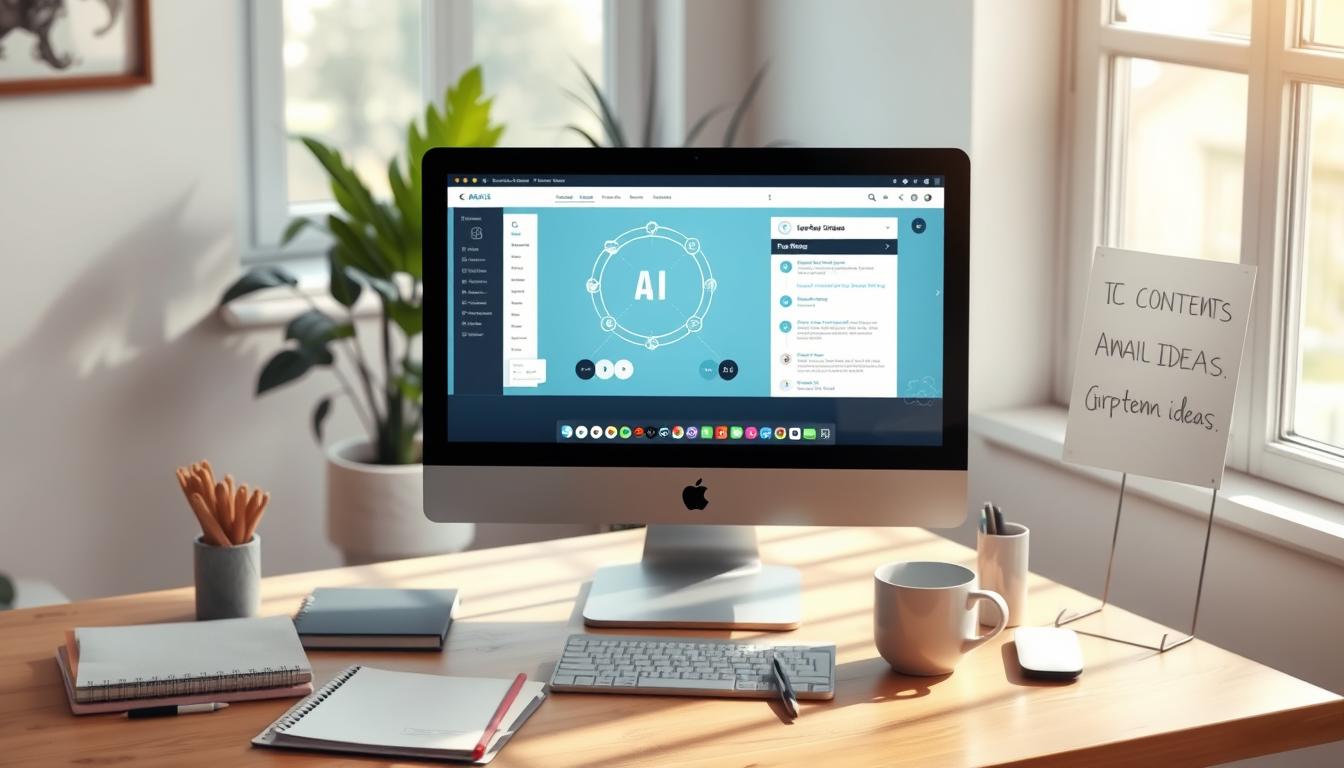In today’s fast-changing business world, only 5% of companies are truly resilient1. They can handle, bounce back from, and adapt to disruptions. Building resilience is key, as it lets companies grow their revenue faster than others2.
By focusing on resilience, businesses can protect their operations and keep stakeholders’ trust. This is true even when facing economic downturns, natural disasters, cyberattacks, or sudden market changes1.
Key Takeaways
- Organizational resilience involves adapting to disruptions, safeguarding operations, and maintaining stakeholder trust.
- Resilient businesses leverage risk assessments, scenario planning, and business continuity plans to enhance preparedness.
- Cultivating a resilient culture requires top-down commitment, employee engagement, and recognition of resilience efforts.
- Investing in business resilience can drive faster revenue growth and greater profit margins.
- Embracing change and adapting quickly helps organizations stay ahead of the competition.
Understanding Business Resilience in Today’s Dynamic Landscape
Organizations face constant disruption and must become resilient to survive and thrive3. Resilience means adapting, innovating, and growing even when things get tough. It’s key for businesses to succeed in today’s fast-changing world, where digital transformation, being agile, and managing risks are vital.
Defining Organizational Resilience
Organizational resilience is about bouncing back from big challenges like economic downturns or tech changes3. It involves managing risks, adapting quickly, and having a culture that values new ideas and flexibility3. Resilient companies can turn disruptions into chances for growth and change.
Key Components of Business Adaptability
To be resilient, businesses need to focus on several areas3. They should have flexible systems, make decisions quickly, and encourage creativity. This way, they can handle market changes well, grab new chances, and reduce disruption effects.
The Impact of Disruption on Modern Business
The business world today is full of uncertainty and change3. Issues like economic downturns, cyberattacks, and supply chain problems can cause big problems4. To deal with these, companies must be proactive, manage risks well, and be adaptable.
Today, businesses need to be digital, agile, and innovative more than ever3. By focusing on resilience, they can face challenges head-on and come out stronger. This approach helps them succeed in the long run, even when things get tough.
| Key Resilience Metrics | Highly Resilient Boards | Less Resilient Boards |
|---|---|---|
| Confidence in Responding to High-Impact Incidents | 56% | 34% |
| Effectiveness in Aligning Risk and Business Strategy | 64% | 29% |
“Resilient organizations experience less downtime, which costs global 2000 companies $400 billion annually.”4
In today’s fast-changing business world, resilience is essential for success. By embracing digital transformation, agility, and innovation, companies can handle disruptions and use them to grow and change.
Creating a Culture of Resilience from the Top Down
Building a resilient organization begins with leadership’s commitment to the concept. This commitment affects every part of the company, building a culture of resilience5. Leaders show their support by talking about progress and praising efforts that help achieve this goal5.
A resilient culture means aligning employees’ work with resilience goals. It makes sure everyone knows their part and is ready for disruptions5. When everyone gets involved, it builds a sense of ownership and teamwork, helping the workforce adapt and succeed5.
Being open and honest is key to building a resilient culture5. Leaders use communication to shape behavior, encouraging ethical talks and reinforcing values5. This builds trust and unity, important for overcoming tough times5.
“Resilient organizations excel in responding, recovering, and preparing contingency plans in case of disruptions.”5
By focusing on leadership, organizational culture, and change management, companies can build a strong foundation5. This approach makes the company flexible, adaptable, and strong against disruptions5.

Resilience is more than just a trend; it’s a must for today’s businesses5. Without it, companies face stress, lower performance, and a weaker competitive edge5. By leading with resilience, leaders can build a culture that helps teams face uncertainty and come out stronger5.
Essential Strategies for Building Adaptive Business Models
In today’s fast-changing business world, being agile and innovative is key. To stay ahead, companies need to be flexible, make quick decisions, and encourage creative problem-solving6.
Developing Flexible Operating Systems
Businesses must be ready to adapt quickly. They should have solid backup plans, redundant systems, and a culture of ongoing improvement6. This way, they can quickly respond to challenges, protect profits, and grow7.
Implementing Agile Decision-Making Processes
Being agile helps businesses face crises and grab new chances. They should make their decision-making fast and based on data6. This agility lets them quickly adjust to market changes, customer demands, and new trends, keeping them competitive and strong7.
Fostering Innovation and Creative Problem-Solving
Innovation and creativity are vital in tough times7. Encouraging employees to think differently and try new things helps find fresh solutions8. This approach boosts adaptability and drives long-term success, advantage, and profit6.
In today’s fast-paced business world, companies that focus on agility, innovation, and improvement do best. They can handle crises, find new chances, and succeed despite disruptions786.
“Resilience is not about bouncing back, but about bouncing forward. It’s about embracing change, learning, and continuously adapting to create new pathways for growth.”
Risk Assessment and Scenario Planning
Effective risk management and scenario planning are key to building business resilience. Companies must do thorough risk assessments to spot threats and weaknesses9. They look at the chances and effects of disruptions like natural disasters, cyber-attacks, and pandemics9.
Scenario planning goes further by imagining crisis situations. It helps develop response plans and understand possible effects9. This way, companies can make stronger business continuity plans and get better at bouncing back from surprises9.
Recent surveys show a big shift in risk management. Over 60% of top executives and risk experts now see it as more than just about money10. Almost 60% of them say their companies are very good at managing risks, thanks to the pandemic’s lessons10.
| Key Resilience Strategies | Description |
|---|---|
| Risk Management Plan | Identifies risks and outlines how to deal with them. |
| Business Impact Analysis (BIA) | Looks at how disruptions might affect key business areas. |
| Business Continuity Plan (BCP) | Details how to keep operations going during and after a crisis. |
Using these strategies, companies can better handle and respond to disruptions. This makes them more resilient and adaptable9. Building resilience is a never-ending job that needs constant checking, tweaking, and getting better to succeed in the long run9.
“Resilient companies align their words with actions, maintaining reputational resilience.”11
As the business world gets more unpredictable11, risk assessment and scenario planning are vital. They help companies get ready for and adapt to disruptions9. By spotting risks, imagining crises, and making solid continuity plans, businesses can get stronger and set themselves up for success9.
Adapting to Disruption: How to Stay Resilient in Business
In today’s fast-changing business world, it’s key to stay resilient. Resilient companies can spot problems early, plan well, and check if their plans work12.
Identifying Early Warning Signs
Good businesses watch industry trends and market shifts closely. They stay alert to signs of trouble. This way, they can get ready for big changes and lessen their effects13. Companies that adapt fast to new situations are the most resilient13.
Developing Response Strategies
When trouble hits, having a crisis team is vital. They should know their roles well for quick, smart decisions. Companies that can change fast and make decisions quickly do best in tough times12. Teams that can act on their own are more resilient and adaptable12.
Measuring Adaptation Success
It’s important to see how well plans work. Businesses should watch how fast they bounce back and keep running when things get hard12. Being resilient makes employees happier and more committed, which helps the whole team14.
By being proactive and strategic, companies can not only survive but thrive in the long run13.

“Resilient organizations are those that can adapt quickly to change and unforeseen circumstances.”13
| Key Aspects of Business Resilience | Impact |
|---|---|
| Healthy Cash Flow and Reserves | Increased likelihood of surviving significant disruptions13 |
| Diverse Revenue Streams | Reduced vulnerability to economic fluctuations13 |
| Modular Organizational Design | Allows parts of the company to fail without collapsing entirely13 |
| Technology Adoption | Supports business adaptation and continuity during times of change13 |
| Adaptable Processes | Contribute to business flexibility and learning, promoting resilience13 |
By spotting problems early, planning well, and checking their plans, businesses can get better at handling disruptions12. The main thing is to create a culture that encourages quick, smart decisions14.
Building Robust Business Continuity Plans
Having strong business continuity plans is key to keeping things running when things go wrong15. These plans should cover data backup, how to stay in touch, and where to move people. It’s vital to make these plans easy to understand and quick to use in emergencies16.
Turning complex plans into simple templates helps everyone know their role fast16. Keeping these plans up to date is also important. This ensures they work well with new threats and changes in the company.
Every business faces its own unique challenges15. Good plans guide you through tough times15. Doing a thorough risk check helps spot weak spots and threats15.
Knowing your network and data flow is key to strong cybersecurity15. Threat intelligence helps protect against new cyber dangers15. It’s also important to think about global risks in your plans15.
Sorting risks by how big they are is smart for managing them15. Being able to change plans helps businesses stay strong through changing times15.
| Key Components of Effective Business Continuity Plans | Description |
|---|---|
| Data Backup and Recovery | Procedures for regularly backing up critical data and restoring it in the event of a disruption |
| Alternative Communication Channels | Strategies for maintaining communication with employees, customers, and stakeholders during an incident |
| Personnel Relocation | Plans for relocating or enabling remote work for employees in response to a crisis |
| Incident Response and Crisis Management | Defined procedures for quickly identifying, containing, and resolving disruptive events |
| Stakeholder Engagement and Communication | Strategies for transparently sharing information and coordinating with key stakeholders during a crisis |
Planning for business continuity is key for dealing with disruptions1516. It’s important to keep plans up to date as the world changes15. Good plans help businesses stay flexible and competitive for the long haul16.
“Effective business continuity planning is not just about having a plan, but about continuously adapting and improving it to address evolving risks and organizational needs.”
Creating a solid business continuity plan is vital for keeping things running during tough times16. Adding disaster recovery and crisis management to your plans makes your business stronger16. Doing a business impact analysis helps focus on the most important things during disruptions16.
By having strong business continuity plans, companies can protect their work and stay strong through many challenges1516. This approach to managing crises and risks helps businesses stay ready for anything1516.
By implementing robust business continuity plans, organizations can [safeguard their operations] and ensure their ability to navigate various disruptions, from natural disasters to economic downturns and cybersecurity threats. This approach to crisis management and risk mitigation empowers businesses to stay resilient and adaptable in an ever-changing landscape1516.
Investing in Technology and Digital Transformation
Businesses must adapt to the fast-changing world by embracing digital transformation and strong tech solutions. New tech changes how we work17. To stay ahead, companies need to use cloud tech, protect against cyber threats, and make smart choices with data analytics.
Embracing Cloud Solutions
Cloud tech is key for business resilience. It lets companies grow, work together from anywhere, and keep running even when things get tough18. Cloud tech makes businesses quick to adapt to market changes.
Implementing Cybersecurity Measures
Cyber threats are getting smarter, putting businesses at risk17. It’s vital to have strong security like encryption and regular updates19. This keeps data safe and customer trust high.
Leveraging Data Analytics
Data is vital for today’s businesses. Using data analytics can mean the difference between success and just getting by17. It helps predict trends, spot risks, and make smart choices18. This way, companies can handle disruptions better and find new chances in the digital world.
Investing in digital transformation and tech is now a must for businesses17. By using cloud tech, strong security, and data analytics, companies can be more flexible, reduce risks, and succeed in the fast-changing business world.
“Businesses that prioritize digital resilience gain a competitive advantage in navigating challenges and market dynamics.”17
Strengthening Supply Chain Resilience
In today’s fast-changing business world, making your supply chain resilient is key. Supply chain management, risk mitigation, and building strong vendor relationships are vital. They help your supply chain handle disruptions well20.
Companies with strong supply chains can recover costs faster than others. They have 3x faster cash-to-cash cycles20. Keeping extra inventory helps avoid stockouts and delays20. Also, having multiple suppliers makes your supply chain more reliable and flexible20.
- Use the ISO 31000 Risk Management Principles and Guidelines to find and fix weaknesses before they cause trouble20.
- Blockchain technology helps keep the supply chain transparent and builds trust among partners20.
- AI and data analytics help predict disruptions and find hidden patterns in the supply chain, improving forecasting20.
It’s important to keep checking for risks and adapting to new threats20. By making your supply chain more resilient, you can handle disruptions better and keep running smoothly even when things get tough21.
“Just one extended disruption to production can cause companies to lose 30% to 50% of their earnings before interest, taxes, and depreciation.”21
A 2023 McKinsey survey found that almost all businesses faced supply chain problems last year21. Almost half said these issues made planning very hard21.
By tackling supply chain weaknesses and using resilience strategies, companies can move through the changing business world with confidence and quickness21.
Developing a Resilient Workforce
Creating a resilient workforce is key for adapting to change. It means investing in programs that teach employees to handle new situations22.
Training and Skill Development
Teaching the right skills is vital for resilience. Yet, only 16 percent of employers focus on adaptability and learning22. Companies need to focus on training and updating skills to keep up with changes.
Creating Adaptable Teams
Building a team that can adapt is critical. Resilient teams can adjust to new tasks and use AI tools23. Encouraging teamwork, flexibility, and a growth mindset helps employees work well together, even in tough times.
Promoting Employee Well-being
Keeping employees motivated and engaged is essential. A safe work environment boosts engagement and creativity, leading to better ideas22. Companies should support mental health, balance work and life, and create a positive workplace.
By focusing on training, teamwork, and well-being, businesses can build a strong workforce. This team can handle disruptions and help the company thrive23.
| Company | Workforce Resilience Initiatives |
|---|---|
| Google’s “20% time” policy allows employees to spend 20% of their work time pursuing projects of their choice24. | |
| Microsoft | Microsoft Learning program provides employees with access to online courses, certifications, and training programs24. |
| Apple | Apple holds regular town hall meetings for communication24. |
| Shopify | Shopify uses tools like Slack and Zoom for communication24. |
| LinkedIn offers a variety of learning and development programs, workshops, and mentorship opportunities. LinkedIn has an internal mobility program for exploring different career paths within the organization. LinkedIn provides leadership development programs, including training, coaching, and mentorship opportunities. LinkedIn has employee resource groups for networking, mentorship, and career development24. |
“Resilient organizations demonstrate the ability to reallocate talent to address changing priorities and possess dynamic digital infrastructures supported by AI-powered tools.”23
Future-Proofing Your Business Strategy
In today’s fast-changing business world, companies need to think ahead. Future-proofing your strategy means getting ready for new challenges and trends. It’s about staying ahead with innovation and keeping a competitive advantage.
One important step is to regularly review and update your strategy. Check if your products and services meet current market needs. This might mean investing in research and development or trying new business models. A culture of continuous improvement is also key25.
Scenario planning is another vital tool. It helps you imagine and prepare for different futures. You look at big changes like economic trends and new technologies. Then, you figure out how these might affect your business26.
- Scenario planning makes your strategy more flexible and helps manage risks better26.
- It’s useful for dealing with economic ups and downs, new tech, and challenges like climate change26.
By being proactive and flexible in planning, businesses can succeed in a changing world. Focus on innovation, risk planning, and staying competitive. This way, you can keep your strategy strong and ahead of the game2526.
| Key Strategies for Future-Proofing | Benefits |
|---|---|
| Continuous innovation and business model exploration | Increased agility, adaptability, and competitive advantage |
| Regular strategy review and adjustment | Alignment with evolving market trends and customer needs |
| Effective scenario planning | Enhanced strategic flexibility, improved risk management, and strengthened organizational resilience |
“The ability to anticipate and adapt to change is the hallmark of a future-proof business strategy. By embracing innovation and continuously re-evaluating our approach, we can stay one step ahead of the competition and thrive in an unpredictable market.”
Conclusion
Adapting to disruption and building business resilience is key for long-term success today27. Resilience is vital for a company’s success in a fast-changing world with new technologies and economic ups and downs27. A strong business strategy is needed to face evolving challenges28.
By embracing change, investing in tech and people, and planning for risks, businesses can grow stronger28. This helps them handle challenges and find new chances.
27 Adapting to change and having a flexible strategy are vital for staying ahead in today’s fast business world27. Embracing disruption and building a strong business model are key to staying competitive and sustainable27. Resilience is essential for long-term success and survival in a world of tech advances, economic downturns, and other disruptions.
The path to resilience is ongoing, needing constant watchfulness, flexibility, and a drive for betterment29. Building business resilience is a never-ending task that involves regular checks and tweaks29. The role of technology in keeping businesses resilient is highlighted, focusing on data backup, cyber security, cloud solutions, and managed IT services28.
As businesses face a more complex and unpredictable world, those focusing on resilience will lead and thrive in their fields.
FAQ
What is business resilience?
Business resilience means a company can adapt and bounce back from big challenges. This includes economic downturns, natural disasters, cyberattacks, or sudden market changes. It’s about being ready, managing risks well, and valuing flexibility and new ideas.
What are the key components of business adaptability?
Being adaptable means having flexible systems and making quick decisions. It also means encouraging new ideas and solving problems creatively. These steps help businesses react fast to big issues, protect profits, and grow in the future.
How can leadership build a culture of resilience?
Leaders must show they care about resilience. This sets the example for everyone else. They should talk openly about goals, praise efforts that help the team, and make sure everyone works towards these goals.
What are the essential strategies for building adaptive business models?
To build adaptable models, focus on flexible systems and quick decision-making. Encourage innovation and creative problem-solving. Also, have strong backup plans and systems, and promote a culture that values being adaptable and always improving.
Why is effective risk assessment and scenario planning critical for business resilience?
Risk assessment and scenario planning are key for resilience. Companies should look for and plan for different threats. This helps them get ready for any disruption and respond well to surprises.
How can businesses stay resilient in the face of disruption?
To stay resilient, watch for early signs of trouble and have plans to deal with it. Create systems to track trends and threats. Also, have a crisis team ready to make quick, coordinated decisions.
What are the key components of robust business continuity plans?
Good plans cover data backup, communication, and moving people. They should be clear, easy to find, and updated often. This keeps them useful for new threats and changes in the company.
How can technology and digital transformation enhance business resilience?
Technology and digital changes are key for resilience. Use cloud solutions for flexibility and cybersecurity to protect against threats. Data analytics help make smart decisions. These steps keep businesses running smoothly, even when things get tough.
Why is strengthening supply chain resilience critical for business continuity?
A strong supply chain is vital for keeping business going. Work closely with suppliers, have backup plans, and use different suppliers. This way, businesses can handle disruptions and keep running, even when things get hard.
How can organizations develop a resilient workforce?
A resilient workforce is essential. Invest in training, value flexibility and learning, and support mental health and work-life balance. This helps employees handle challenges and boosts the company’s resilience.
What is the importance of future-proofing business strategy?
Future-proofing means getting ready for changes and surprises. Focus on innovation, keep up with trends, and stay competitive. Regularly update strategies to match new tech and changing consumer habits. This helps businesses succeed in a changing world.
Source Links
- Business Resiliency: 5 Strategies for a More Resilient Organization – https://www.globalguardian.com/global-digest/business-resiliency
- Adapting to Change – Business Resilience in a Rapidly Evolving Marketplace – https://www.linkedin.com/pulse/adapting-change-business-resilience-rapidly-felipe-negron-shrm-cp-r8jgc
- Business Resilience – https://www.mckinsey.com/featured-insights/business-resilience
- A Comprehensive Guide to Business Resilience – Dataminr – https://www.dataminr.com/resources/insight/a-comprehensive-guide-to-business-resilience/
- Employee Experience – 5 Starting Points for a Resilient Organizational Culture – https://www.lumapps.com/employee-experience/resilient-organizational-culture
- Key Strategies for Enterprise Resilience – https://continuity2.com/blog/fortifying-enterprise-resilience-strategies-for-thriving-amidst-challenges
- Building Resilience in A Small Business: Strategies for Adapting to Rapid Market Changes – https://www.linkedin.com/pulse/building-resilience-small-business-strategies-adapting-rami-levin-z836e
- Staying Agile: Adapting to Changing Business Models – https://bryghtpath.com/adapting-to-changing-business-models/
- Business resilience – The what, why & how to minimise business disruption – https://www.linkedin.com/pulse/business-resilience-what-why-how-minimise-disruption-efex-group-hej4c
- From risk management to strategic resilience – https://www.mckinsey.com/capabilities/risk-and-resilience/our-insights/from-risk-management-to-strategic-resilience
- Business Resiliency: How to Bend Without Breaking – https://riskonnect.com/integrated-risk-management/business-resiliency-how-to-bend-without-breaking/
- Raising the resilience of your organization – https://www.mckinsey.com/capabilities/people-and-organizational-performance/our-insights/raising-the-resilience-of-your-organization
- Building a Resilient Business Model in the Service Industry – https://portercap.com/resilient-business-models/
- Resilience and Adaptability: How You Lead Matters – https://www.nicheacademy.com/blog/resilience-and-adaptability-how-you-lead-matters
- Strategic Business Continuity Planning: A Resilience Guide – https://bryghtpath.com/strategic-business-continuity-planning/
- Business Resilience vs. Business Continuity: Navigating the Path to Stability – https://www.techlocity.com/blog/business-resilience-vs-business-continuity
- Adapting and Thriving: The Role of Digital Resilience in Business Success – https://ctrl-disrupt.nl/en/-insights-news/adapting-and-thriving-the-role-of-digital-resilience-in-business-success
- Council Post: Seizing Opportunities: Why Companies Should Invest In Technology Resiliency – https://www.forbes.com/councils/forbestechcouncil/2023/11/08/seizing-opportunities-why-companies-should-invest-in-technology-resiliency/
- Future-Proof Your Business: Building Strategies for a Disruptive World – https://www.sorenkaplan.com/building-business-strategies-for-a-disruptive-world/
- Strengthening Supply Chain Resilience: A Roadmap for Success – https://bryghtpath.com/strengthening-supply-chain-resilience/
- 6 Essential Strategies to Maximize Supply Chain Resilience – Ware2Go – https://ware2go.co/articles/supply-chain-resilience/
- Developing a resilient, adaptable workforce for an uncertain future – https://www.mckinsey.com/capabilities/people-and-organizational-performance/our-insights/developing-a-resilient-adaptable-workforce-for-an-uncertain-future
- Strategies to Build and Sustain Workforce Resilience | Gloat – https://gloat.com/blog/workforce-resilience/
- “Building a Resilient Workforce: Strategies for Navigating Change” – https://www.linkedin.com/pulse/building-resilient-workforce-strategies-navigating-change-sharma
- Future-Proof Your Business: De-Risking Strategies for Uncertain Times – https://www.linkedin.com/pulse/future-proof-your-business-de-risking-strategies-uncertain-sofela-ygugf
- How to Use Scenario Planning for Future-Proofing Your Business – https://www.linkedin.com/pulse/how-use-scenario-planning-future-proofing-your-business-jason-branin-yrsie
- How to Build a Resilient Business Strategy in a Disruptive Environment – Greenwich School of Business and Finance – https://blog.gsbf.co.uk/how-to-build-a-resilient-business-strategy-in-a-disruptive-environment-3/
- Building a Resilient Business: Strategies for Navigating Uncertainty – https://www.linkedin.com/pulse/building-resilient-business-strategies-navigating-ajmal
- Business resilience – minimising business disruption – https://www.efex.com.au/news-insights/business-resilience-the-what-why-how-for-smbs/







